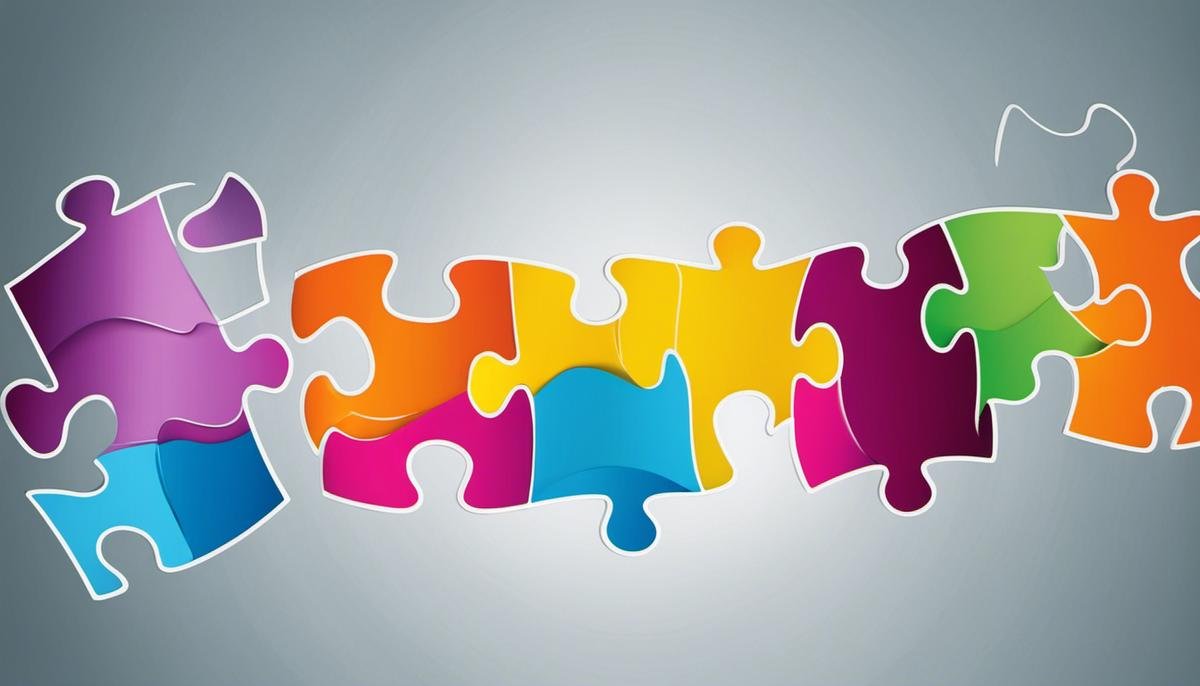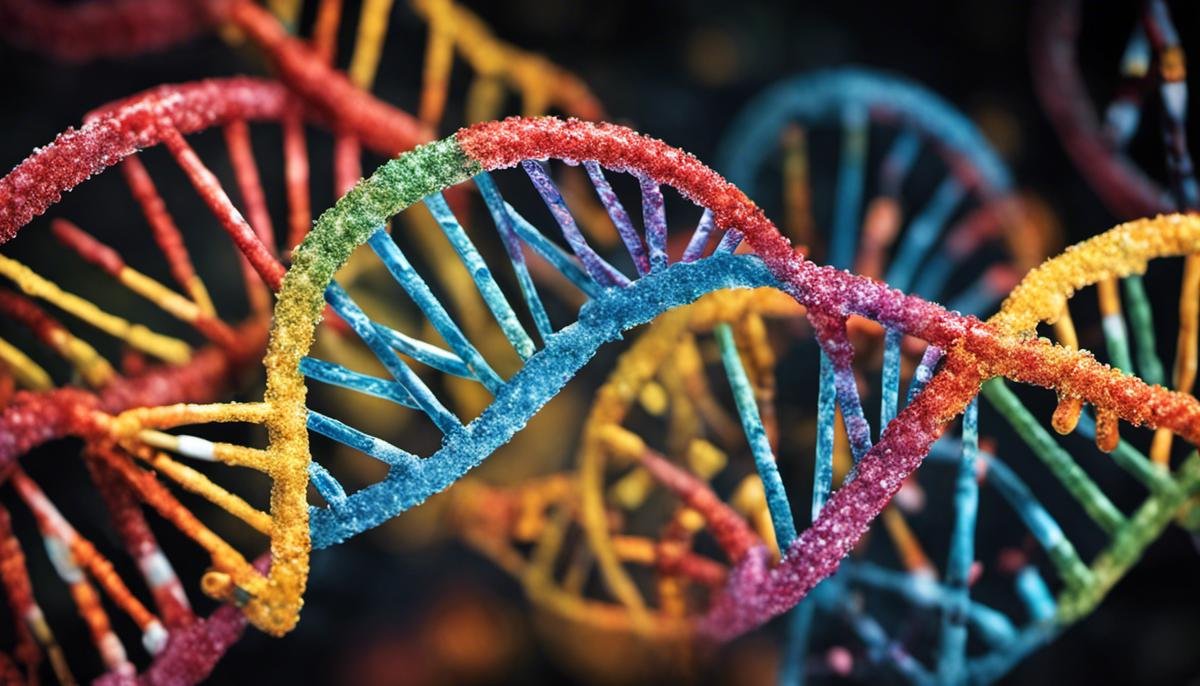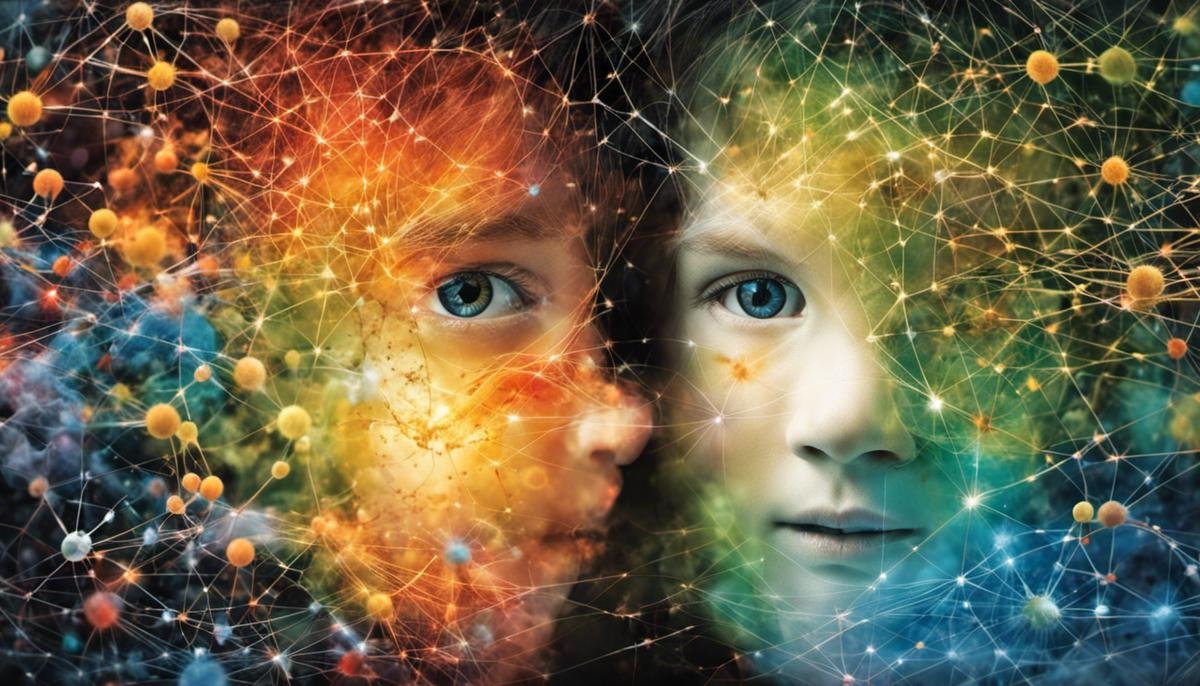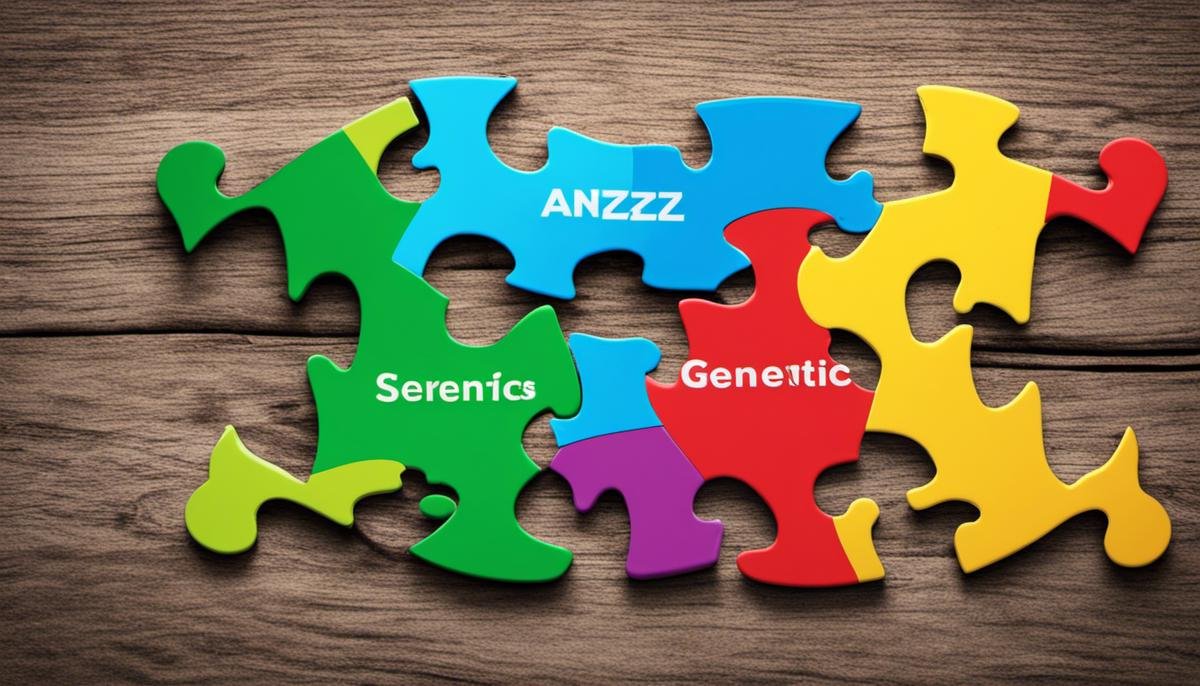
In the vast domain of medical research, the exploration of Autism Spectrum Disorder (ASD) offers fascinating insights into the intricate jigsaw puzzle that constitutes our genetic apparatus. ASD, a neurodevelopmental condition marked by a variety of symptoms such as challenges with social skills, repetitive behaviors, speech, and nonverbal communication, touches the lives of many families around the globe. Unveiling the underlying genetics of this spectrum disorder not only demystifies its existence, but also sheds light on its comprehensive diagnosis, earmarks strategies for treatment, and broadens our empirical understanding of human genetic architecture.
Autism: An Overview
Understanding Autism Spectrum Disorder: A Pathway to Compassionate Parenting
With every child being so beautifully different, the journey of parenting remains a uniquely enriching experience. Among these differences, something you might have come across is Autism Spectrum Disorder (ASD). Although ASD is becoming more commonly discussed, many are still uncertain about what exactly it is. Let’s dive into the topic and explore its intricacies to better comprehend, accept, and support those children who experience it.
Autism Spectrum Disorder, often simply referred to as Autism, is a complex, neurodevelopmental condition. It’s importance to note, it’s not a disease, but rather a deviation in typical neural development that commences early in childhood and persists throughout life.
One of the primary ways ASD materializes is through difficulties in social interaction and communication. You might notice a little one with ASD struggling to maintain a conversation, make eye contact, or understand other people’s feelings and perspectives. Nonetheless, it’s important to understand that these children are capable of communicating and connecting — just in their unique way.
Something fascinating about ASD is the “spectrum” aspect of it. No two individuals with autism are the same. The phrase “on the spectrum” considers the wide range of symptoms, skills, and levels of disability that can occur. Some kids might require minimal help, while others might need substantial support in accomplishing their daily activities.
Contrary to some beliefs, kids with ASD often have unique strengths and talents. They may be detail-oriented, possess a prodigious memory, or particular talents in fields like art, computer programming, or mathematics. The key is in offering them various opportunities to discover and foster these skills.
Early detection of autism can genuinely make a significant difference: the earlier ASD is identified, the sooner intervention and accommodation strategies can be implemented. Some signs to watch out for might include delayed speech development, repetitiveness in play or speech, low to no social interest, or sensitivity to sensory input. However, these symptoms can vary significantly, so if you notice something that seems off, always consult with a medical professional.
Being a parent of a child on the autism spectrum may bring about unique challenges, yet it’s essential to remember there are plenty of resources and communities ready to offer support. The old saying, ‘it takes a village to raise a child’ definitely rings true, especially when navigating a diagnosis of ASD.
In the journey of understanding and raising a child with autism, it’s paramount to focus on what these special children CAN do, rather than what they can’t. Every step they make towards progress, no matter how small, is a victory to be celebrated. With patience, understanding, and empathy, we can all play our part in making this world more supportive and accepting of our amazing kids with autism.

Photo by vbcreative on Unsplash
Understanding Genetics
Unraveling the Connection: Genetics and Autism Spectrum Disorder
From the moment a baby is born, parents play the “who do they look like” game, tracing the familial roots of the newborn’s features, from their slanting eyes, dimpled smile to tracing the recognizable curve of her great-grandmother’s nose. We are, after all, a sum of our parents and ancestors’ genes, right?
Genetics play a crucial role in determining who we are, from the color of our eyes and hair to, at times, our health conditions. This, indeed, includes Autism Spectrum Disorder (ASD). It might feel like venturing into a complex labyrinth when we try to comprehend the connection between genetics and ASD, but this knowledge can help in providing more personalized care to children with ASD, making the journey smoother for them and their loved ones.
A language genes understand- DNA
Our genetic makeup can be compared to an elaborate, super-detailed instruction manual that guides the building blocks of our bodies. These instructions are coded in a language within our DNA, we call genes. Each gene has instructions for making a particular protein, which eventually directs the body’s processes. When these instructions tactfully align, our body functions smoothly. However, sometimes, an alteration or mutation can occur in these genes, leading to various health conditions, ASD being one of them.
Connecting the Dots: Genetics and Autism Spectrum Disorder
Researchers have been investigating the genetic underpinnings of ASD for decades; unearthing over hundreds of genes associated with ASD. These genetic links suggest that ASD doesn’t follow a ‘one-size-fits-all’ notion; instead, it may be carried forward through numerous genes, each contributing a small piece to the larger puzzle.
Genetic involvement in ASD is complex and can vary. Some children might have ASD due to a single gene mutation, while others may demonstrate symptoms due to a complicated interplay of many genes. This variability is what makes ASD a “spectrum” disorder.
Researchers also found ASD genes to be active in prenatally-developing brain cells, suggesting a prenatal onset of this disorder. Enlightening, isn’t it?
Why is Understanding Genetics Important?
On a broader level, skincare and hair-color preference may not seem significant. However, the importance of understanding the genetic contribution in ASD lies in an excellent word – ‘intervention.’ By tracing ASD to specific genes, it could potentially lead to early detection, which is paramount in accessing early interventions and supportive services.
Furthermore, having a genetic understanding of ASD allows for a more personalized approach to treatment. In an age where precision medicine is on the rise, these findings can be directed towards more precise therapies right down to the genetic level.
A Look into the Future – Genetics Testing in Autism
There is a scope for genetic testing in autism to predict the risk of ASD in pre-born children or younger siblings of children with ASD. However, since ASD results from an interaction of various genes, predicting with 100% certainty is currently not possible. Nevertheless, the findings may help inform clinical decisions and prepare parents early on for the potential challenges and joys their child might encounter.
Here we are, standing at the precipice of an exciting leap in combining genetic knowledge and autism. But like any other parenting journey, raising a child with ASD will always be about embracing them in their uniqueness, lending a supportive hand, and rejoicing in every single step, however small. Let’s remember, science equips us, but at the end of the day, love, acceptance, and a nurturing environment blend to create the perfect concoction called ‘family’.
While we keep advocating and educating for a more understanding society, let’s also pause, be present and cherish the unstoppable spirit within our children, for they teach us the true essence of life in ways beyond our comprehension. Genetics indeed play a part, but it doesn’t define them. After all, they are so much more than their genes!

Genetic Contribution to Autism
Diving into the Fascinating World of Genetics: The Hidden Link in Autism Spectrum Disorder (ASD)
The world of genetics can often feel like an unbeaten path. A complex web of codes and signals dictating our very existence – right down to our physical traits, health conditions, and yes, even our behavioral patterns. This is why it’s utmost important to understand the role genetics play when discussing Autism Spectrum Disorder (ASD).
So, let’s start from the beginning – DNA, the blueprint of life. Our bodies are like intricate cities, with trillions of cells operating in harmony. The DNA inside our cells act like a specialized language, directing every cell towards its destiny. Whether it’s lending color to our eyes or shape to our noses, they’re making decisions that define us, in every sense of the word.
This intricate genetic game also extends into the terrain of ASD, creating a complex connection. While ASD cannot be pinpointed to a single cause, studies have in fact unearthed hundreds of genes associated with the disorder, opening doors to a world of possibilities and clarifications. But it’s important to remember that the presence of these genes doesn’t guarantee the development of ASD – rather widening the spectrum, leading us to classify it as a spectrum disorder.
The story of ASD genes may start in the womb itself. Scientific research suggests that ASD genes are active in prenatal brain cells, laying out the foundation potentially years before any noticeable symptoms. This early onset further underlines the importance of understanding genetics for timely detection and intervention in ASD cases.
With knowledge comes power. As we uncover more about the genetic understanding of ASD, it revolutionizes the potential for personalized treatment plans. These future plans may pivot on correcting or mitigating the effect of the rogue genes, giving way to promising solutions tailored to one’s unique genetic profile.
However, it is essential to balance hope with reality. The area of genetic testing is still in its nascent stages. While it does hold potential, currently, it cannot predict with certainty the risk of ASD. Therefore, while we strive for early interventions, it’s important to not add undue stress to parents or the child.
In conclusion, our genes are important pieces of our intricate puzzle of life and they certainly play a significant role in ASD. But while we decipher these biological codes, let us not forget to embrace our children for their uniqueness beyond their genes. Every child with ASD has a different story to tell and a different path to tread. And we are here, not just to guide them, but to learn from their unique journeys, understand their worlds, and strive for a society that accepts, supports, and celebrates them just as they are. Every step of the journey is significant, and every child is a beacon of potential waiting to shine bright.

Environmental Factors Versus Genetics
The Interplay Between Environmental Factors and Genetics in Autism: A Parent’s Perspective
When it comes to understanding Autism Spectrum Disorder (ASD), it’s easy to become lost in a sea of scientific explanations, complex genetics talks, and elaborate clinical studies – especially if you’re just a parent trying to figure out what’s going on. But, don’t fret – we’re here together to demystify some of these complexities and delve into the incessant ‘nature vs nurture’ debate in ASD.
Remember, there’s already discussion around the role of genetics on ASD, which formulates a part of the complex puzzle. But, a question that frequently pops up in conversations is, “Are environmental factors just as impactful?”
Without any delay, let’s dive into this pressing question.
The role of environmental factors in ASD, just like the genetic influence, can be quite complex. These factors aren’t limited to the conditions surrounding us but also include everything that our body interacts with – food, medicine, air, and more. In ASD, discussions around environmental factors often center on influences during prenatal and early life stages.
Scientists have been focusing their research on how these factors may cause changes in brain development leading to ASD. However, while there is emerging evidence supporting the influence of certain prenatal exposures (like parental age, complications during birth, and few nutritional factors), the concrete evidence needed to draw definitive conclusions remains elusive.
Additionally, the single-factor explanation is largely being replaced by a multi-factorial model, where an interplay of multiple genetic and environmental factors contributes to ASD. This explains why not everyone exposed to similar environmental factors or carrying similar genetic predispositions develops ASD – illustrating the uniqueness of every individual’s experience with ASD.
Here’s where it gets really interesting. Some researchers believe that certain genes may make a person more susceptible to environmental triggers, paving the way for an ‘environment-gene interaction’. While there’s more research required in this field, the likelihood of gene-environment interplay shows us just how tangled and intricate the ASD puzzle can be.
While there’s still much to uncover, one thing is certain: both genetics and environmental factors have crucial roles in understanding ASD. They work in tandem, like two sides of the same coin. So, the question isn’t really whether one is more important than the other, but rather how they intertwine in unique and different ways to influence the development of ASD.
Sharing this information isn’t meant to oversimplify the complexity of ASD or attribute it to any single cause. Instead, the objective is to provide insight into the ongoing research tirelessly aimed at unlocking the mysteries of ASD.
In the end, whether it’s through understanding complex genetic studies or pondering over environmental influences, our ultimate goal remains the same – to appreciate the uniqueness in every child diagnosed with ASD and ensure they receive the acceptance, love, and support they deserve.
So, keep encouraging their strengths, celebrating their victories – no matter how small – and most importantly imbibe in them a belief: they aren’t defined by their ASD diagnosis, but by the incredible individuals they are.

Genetic Testing and Autism
Unlocking the Mysteries of Autism: The Role of Genetics and Beyond
Understanding Autism Spectrum Disorder (ASD) is often a complex and layered journey full of different paths and discoveries. We’ve already explained what ASD is and its impact on individuals and their families, but did you know that genetics plays a significant role in ASD as well? While the intricacies of our genetic code might seem like something straight out of a sci-fi movie, it holds answers that can help parents better understand their child’s ASD diagnosis.
Simply put, genetics is the study of how traits are inherited through the genes from parents to their offspring. Amazingly, our genes are the creators of our physical makeup, determining everything from eye color to health conditions. When it comes to ASD, science has identified a complex genetic component: hundreds of genes have been associated with the disorder. These genes can vary from person to person, making ASD a ‘spectrum disorder’, exhibiting a wide range of symptoms and behaviors.
Interestingly, ASD genes also begin to show their effects early, even prenatally. Studies tell us that the action of these genes in prenatal brain cells can contribute to the onset of ASD. Thus, understanding the genetic makeup of a child can potentially facilitate early detection and intervention, something that can significantly improve the condition of a child with ASD over time.
This genetic understanding also creates the potential for personalized treatment plans. Just like how knowing the cause of an ailment can lead to more effective treatment, understanding the genetic factors behind ASD can help develop strategies tailored specifically to an individual’s needs.
However, it’s crucial to remember that as much as genetics can reveal, it is not the all-encompassing predictor of ASD. Genetic testing, while insightful, can merely indicate a risk and does not provide absolute certainties. It’s also important to recognize that while genes play a pivotal role in ASD, they do not define a child. Every child on the spectrum is unique, and their worth extends far beyond their genes.
Beyond genetics, our understanding of ASD is continuously expanding. Research has suggested that environmental factors might also play a role in ASD, especially during prenatal and early life stages. However, there’s still a lot we don’t know, and current evidence is far from concrete. ASD is likely a multi-factorial condition – a culmination of both genetics and environment, possibly even their interaction.
ASD is, and will remain, a unique experience for each individual affected by it. The inability to fully understand this complex condition doesn’t diminish the extraordinary journey of individuals with ASD and their families. The ongoing research is unlocking new knowledge about ASD every day.
In the bigger picture, the journey of understanding ASD is not just about genetics, environment, or biology. It’s about acceptance, love, and support. It’s about allowing everyone on the spectrum to find their place and thrive. Living with ASD, for the individual and the family, is a journey of discovery, resilience, and above all, unconditional love.

The profound relationship between genetics and autism provides an expansive view into the realm of medical science and human development. As we uncover the delicate interplay between environmental factors and genetic predispositions, we shine a spotlight on the twilight zone of gene-environment interactions, contributing to a more nuanced conceptualization of ASD. Genetic testing for autism, while embroiled in a swirl of pros and cons, can potentially act as a beacon, guiding the management and future planning for those on the spectrum. As our understanding continues to grow, this intricate labyrinth of autism genetics further underscores the incredible complexity of the human being.





